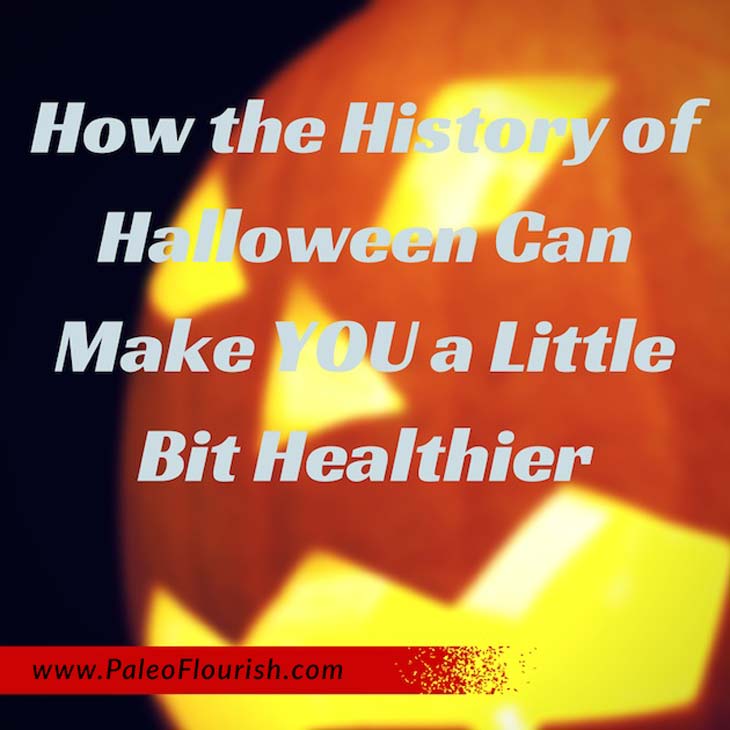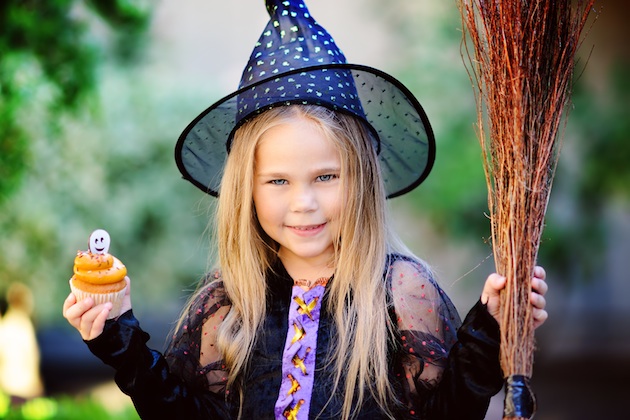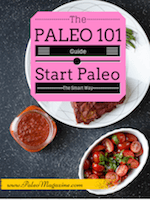How the History of Halloween Can Make YOU a Little Bit Healthier

I’m a little bit of a history junkie. I like learning about history just because I think it’s fun.
But every once in a while, knowing the history of our traditions can be both fun and useful. That’s certainly the case when it comes to Halloween.
Halloween, along with Thanksgiving, is surely viewed as one of the least healthy times of year. But do you know how Halloween started?
It’s a supremely fascinating story. More importantly, though, this story can actually help you become a little bit healthier today.
Let’s take a quick trip back in time…
The Ancient Origins of Halloween
 Knowing about the ancient history of Halloween isn’t likely to immediately make you any healthier, but it’s quite fascinating and, as I’ll explain below, is really all about food and health.
Knowing about the ancient history of Halloween isn’t likely to immediately make you any healthier, but it’s quite fascinating and, as I’ll explain below, is really all about food and health.
There is a small amount of dispute about exactly how Halloween arose, but most scholars agree that its origins lie in 2 very old festivals: Samhain and All Soul’s Day.
Samhain is an old Celtic holiday from the British Isles and Ireland that dates back thousands of years. November 1st was the first day of the new year (and last day of harvest season) for the Celts, and they believed that spirits returned to the earth on the last day of the old year (October 31st).
So on the 31st, the Celts did 3 things:
1. They lit huge bonfires to burn crops and animals as sacrifices to the deities for a prosperous new year.
2. They wore costumes to look like the spirits, so that the spirits wouldn’t recognize them at night as still-living souls.
3. They left food outside of their houses to appease the spirits and keep them out of the house itself.
Around the middle of the 8th century, the Romans (and Christiantiy) had spread throughout the British Isles and Ireland, and the pope at that time decided to move an existing holiday (All Martyr’s Day) from May to November 1st. In addition, November 2nd become All Soul’s Day in 1000 AD. All Soul’s Day was a Christian day to honor the dead.
Even after Christian influence, the 31st of October was celebrated in similar ways to Samhain. Large bonfires were built for celebration, costumes were worn (although to look more like saints and angels), and practice known as “souling” became popular.
“Souling” was then practice whereby poor folks would go door to door begging for food or money, which they would be given in exchange for prayers on November 2nd for deceased members of the family giving the food or money.
It Used to Be All About Food and Health
As you can see, the practices of Samhain and All Soul’s Day (costumes, giving of food, etc.) are not really all that different from our current Halloween celebrations.
However, these old festivals were, broadly speaking, based on 2 big ideas:
1. The harvest was done, so it was time to celebrate the food that you had; and
2. Winter was coming, and if you weren’t healthy or didn’t have enough food, you might die.
In other words, food and health were at the heart of the festivals that preceded Halloween.
Halloween Changed Just a Little Bit
Even in the United States, Halloween has gone through many changes over the past 200 years. The current form of Halloween (centered around children and trick-or-treating) is probably only 60-80 years old.
Unfortunately, as much fun as Halloween can be (it was ALWAYS my favorite holiday as a kid), it’s taken a turn for the worse when it comes to health.
Today, we’ve definitely lost touch with the end of the harvest season, particularly since supermarkets seem to always have produce that’s fresh somewhere in the world.
More importantly, though, we can do much better when it comes to using holidays like Halloween to improve, rather than burden, our health and the health of our children.
Halloween is a $7 billion holiday and a huge portion of that (around $2.5 billion) is spent on candy. In fact, 20 million pounds of candy corn is bought per year in the United States, and most of that is during Halloween.
A Brief History of Candy Corn
Candy corn was invented by George Renninger in the 1880s. It was almost immediately a hit, and though it’s been through ups and downs, it’s still one of the most popular Halloween treats.
In its original form, candy corn was made by combining a slurry (sugar, corn syrup, water, and wax) with a fondant (mostly sugar and water) and marshmallow. Today, it’s mostly the same ingredients: sugar, corn syrup, wax, artificial coloring and binders.
As you can see, there’s nothing very healthy about candy corn, though you probably never thought there was.
In addition to the traditional white, orange, and yellow candy corn, there are also the following variations:
- Brown, orange, and white Indian corn or Thanksgiving
- Green, white and red Reindeer corn for Christmas
- Pink, red and white Cupid corn for Valentine’s Day
- Pastel-colored Bunny corn for Easter
I have such great memories of Halloween as a child that I’d never want to take that away from kids, but I’d love to give them that same experience without the possible health consequences. There isn’t a single solution, but here are a few possible improvements…
Let’s Make Halloween Healthier Again
1. Give Away Slightly Healthier Treats. You don’t have to be the house that every kid hates because you gave away celery sticks. With a little bit of time and effort, you can create treats that are slightly healthier and also cooler because they’re different. Check out our giant list of 47 Gooey and Chewy Paleo Halloween Candy Recipes here for some healthier options.
2. Use the Time Between Halloween and Thanksgiving to Buy and Eat Locally. This is a fantastic time of year in the Northern Hemisphere because there is so much fresh and local produce. And although I’m excited about that because it’s healthier, I’m more excited because fresh and local usually also means yummier. Take your family out to the local farmer’s market and really experience all of the fresh harvest. Try a few new things, and cook dishes you’ve been meaning to try.
3. Use Halloween as a Learning Experience. If you have kids, I hope they have a wonderful Halloween. But I also think it’s an awesome opportunity to get them to start thinking about how food affects their bodies. For instance, most kids know that eating a bunch of candy is going to make them feel a little bit sick. Have a talk with your kids before Halloween and discuss that fact with them. For the most part, it’s an obvious conclusion – even for a young child – that a food that makes them feel sick is probably not very good for their body.
Feed Your Own Spirit
Most of us don’t leave food outside our houses anymore to appease spirits. But that doesn’t mean you should neglect your own spirit.
Everything in your life becomes better when you learn to love and cherish fresh, real ingredients. You appreciate the people and work that made the food possible. You appreciate the beauty of nature that created the food. And you appreciate how much better you feel and how much more energy you have.
It will be Thanksgiving in the United States before you know it, so why not take this opportunity to make sure that you have a Halloween and Autumn that you’re really thankful for?
Images: Copyright © creepyhalloweenimages c> and fotoskaz from Fotolia

